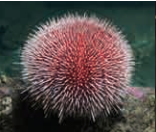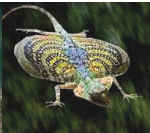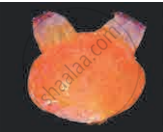Advertisements
Advertisements
Question
Identify the animal given in the picture and write features of its phylum/class.

Solution
The given animal is Tomopteris. It belongs to the phylum Annelida.
For features of Annelida,
- Animals belonging to the phylum Annelida are worms with annuli or rings.
- They are bilaterally symmetrical true coelomates showing metamerically segmented soft, elongated and cylindrical body.
- Digestive system is complete with a mouth and anus at opposite ends of the body.
- Locomotory organs are setae, parapodia, or suckers. They have well-developed layers of circular and longitudinal muscles which help in the movement of the body.
- Excretory organs are nephridia which is a characteristic feature of annelids.
- Respiration takes place through the body surface. Circulatory system is of a closed type. Haemoglobin is dissolved in plasma.
- The nervous system is in the form of nerve rings and ganglionated nerve cords.
- The reproductive system well developed. Animals are mostly hermaphrodites. Few are unisexual.
- Leech (a sanguivorous annelid), Nereis, earthworm, Aphrodite, etc. are examples of Annelida.
APPEARS IN
RELATED QUESTIONS
Answer the following question.
Fish and frog can respire in water. Can they respire through their skin? If yes, why do they have gills?
Answer the following question.
Birds need to keep their body light to help in flying. Hence, they show presence of some organs only on one side. How their skeleton helps in reducing their weight?
Answer the following question.
Cnidarians and Ctenophorans are both diploblastic. Which other character do they have in common, which is not found in other phyla?
Draw a neat labelled diagram.
Aurelia
Draw a neat labelled diagram.
Amphioxus
Draw a neat labelled diagram.
Balanoglossus
Identify the animal given in the picture and write features of its phylum/class.

Identify the animal given in the picture and write features of its phylum/class.

Identify the animal given in the picture and write features of its phylum/class.

Identify the animal given in the picture and write features of its phylum/class.

